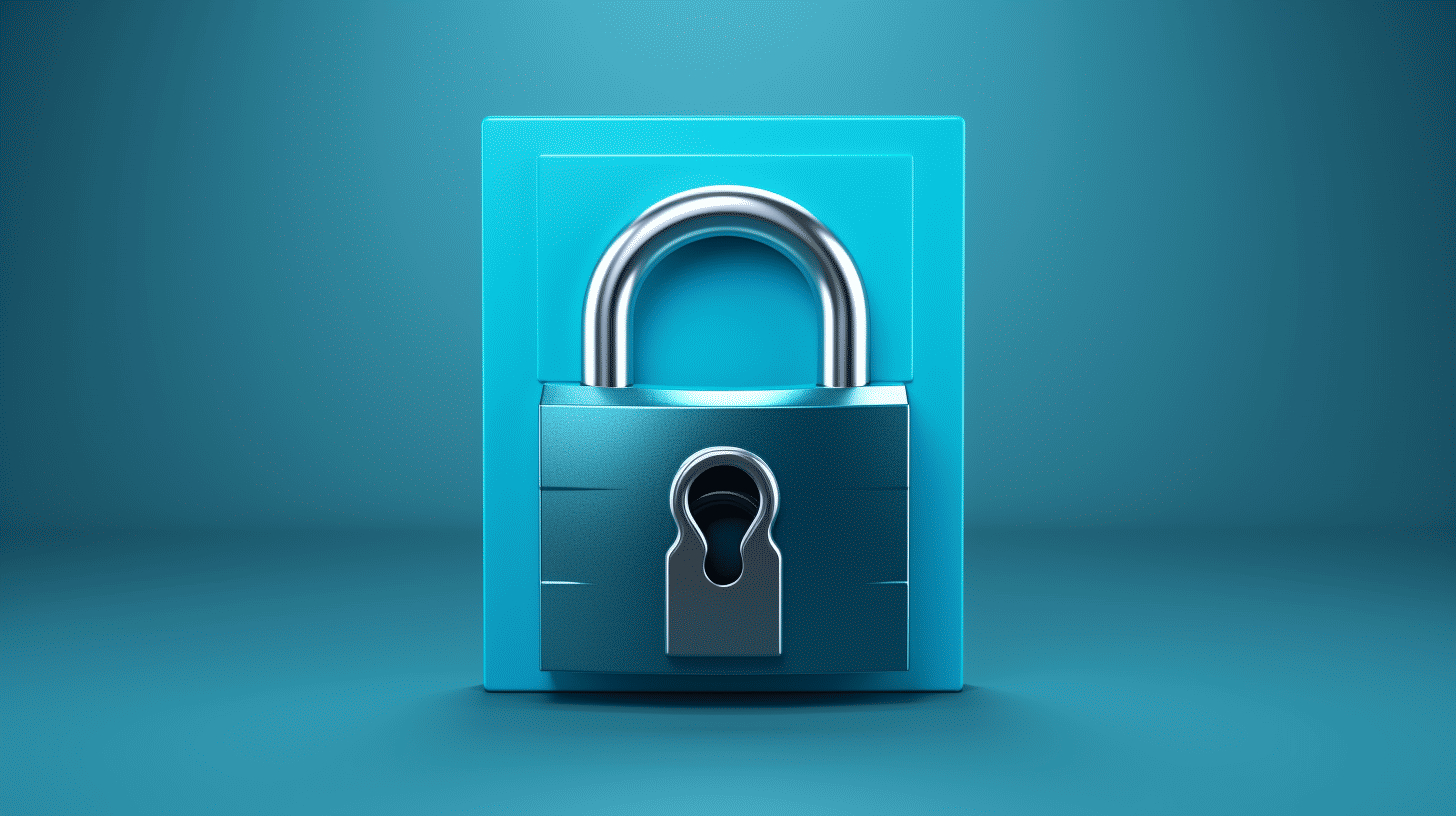In today’s digital landscape, website security is a top priority for businesses and individuals alike. With cyber threats on the rise, it’s crucial to take proactive measures to protect your website from potential attacks. For WordPress users, implementing robust security practices is essential to safeguarding your online presence.
WordPress is one of the most popular content management systems (CMS) globally, powering more than 40% of websites on the internet. Its widespread use, however, also makes it a prime target for hackers. From brute-force attacks to vulnerability exploits, WordPress websites face numerous security challenges.
To help WordPress users enhance their website security, this article will outline essential practices that can mitigate the risk of breaches and unauthorized access. From strong passwords and regular software updates to secure themes and plugins, we’ll cover the best strategies to fortify your WordPress site and protect your valuable data.
Let’s dive in and explore the statistics on WordPress security to understand the gravity of the situation and why it’s crucial to prioritize security measures for your WordPress website.
Statistics on WordPress Security
WordPress is undoubtedly one of the most popular content management systems (CMS) in the world, with millions of websites relying on its user-friendly interface and extensive customization options. However, the widespread usage of WordPress also makes it an attractive target for hackers and cybercriminals. In this section, we will delve into some eye-opening statistics that shed light on the state of WordPress security.
Number of Hacked WordPress Websites
✨ According to a report on securing WordPress sites, the numbers surrounding hacked WordPress websites are alarming:
- 81% of attacks on WordPress sites are based on insecure or stolen passwords.
- Shockingly, 1 in every 25 WordPress sites suffer from hacks.
- On average, at least 13,000 WordPress websites are hacked per day, amounting to a staggering 4.7 million hacked sites per year.
Vulnerabilities and Attacks
The vulnerability landscape of WordPress is constantly evolving, with new threats emerging regularly. Here are some key statistics illustrating the vulnerability and attack landscape:
- Approximately 90% of hacked CMS-based websites are built on WordPress, making it a prime target for attackers seeking to exploit security weaknesses.
- In a single disclosure, a total of 48 vulnerabilities affecting over three million WordPress sites were uncovered, highlighting the scale of the security challenges faced by WordPress users.
- In just one week, 109 new vulnerabilities were discovered in WordPress plugins, with 79 patches made available to address these security issues.
- Shockingly, an estimated average of 30,000 new websites get hacked every day, underlining the widespread and ongoing nature of the security threats faced by WordPress site owners.
⚠️ It’s worth noting that with WordPress accounting for a significant share of the internet, the impact of these vulnerabilities can be far-reaching. For instance, in 2023, WordPress powered a staggering 45.8% of all websites on the internet.
To make matters worse, a concerning number of vulnerabilities remain unpatched:
- 26% of vulnerabilities disclosed in the first half of 2023 are still unpatched, leaving websites exposed to potential exploits.
Lastly, the report highlights that there were 112 vulnerable WordPress plugins and themes reported in July alone. These findings illustrate the urgent need for webmasters and WordPress site owners to prioritize proactive security measures to safeguard their websites from potential attacks.
In the face of these statistics, it is crucial to acknowledge the importance of implementing robust security practices, including regularly updating WordPress, using strong passwords, and leveraging reputable security plugins. Protecting WordPress sites should be prioritized to mitigate the risks associated with cyber threats and ensure the safety and integrity of online platforms.
Best Practices for WordPress Security
With the increasing prevalence of cyber threats, it’s more important than ever to prioritize the security of your WordPress website. By implementing the best practices outlined below, you can safeguard your site and protect it from potential vulnerabilities.
Passwords and Authentication
One of the most common vulnerabilities that hackers exploit is weak passwords. In fact, around 8% of WordPress websites are hacked due to this security oversight[1]. To ensure a robust defense, here are some password best practices:
- Create strong passwords: Avoid using common words, personal information, or easily guessable combinations. Instead, opt for a mix of uppercase and lowercase letters, numbers, and special characters.
- Implement two-factor authentication (2FA): By enabling 2FA, you add an extra layer of security to your login process. This typically involves entering a unique code or receiving a verification prompt on a separate device.
Remember, your password is the key to your website’s security. Take the time to create a strong one and regularly change it to keep potential threats at bay.
Software Updates
Regularly updating your software is vital for maintaining WordPress security. Yet, nearly 50% of website administrators fail to enable auto-updates for WordPress, plugins, and themes[2]. By neglecting these updates, you leave your site vulnerable to known security risks. Here’s why timely updates are crucial:
- Patch security vulnerabilities: Developers release updates to fix any discovered security flaws. Ignoring these updates opens the door for hackers to exploit these weaknesses.
- Benefit from new features and improvements: Updates often introduce new features and performance enhancements, allowing your site to function optimally.
Make it a habit to check for and install updates frequently to ensure your WordPress installation and its components are always up to date.
Regular Backups
Having a reliable backup plan is critical in case of a cyber attack or any unforeseen circumstances. Regularly backing up your WordPress website gives you peace of mind knowing that you can restore your site to a previous state if necessary. Here’s why backups are essential:
- Protect against data loss: If your site falls victim to malware, hacking attempts, or other issues, having backups ensures that you don’t lose valuable data.
- Facilitate easy restoration: With backups in place, you can quickly restore your site to its previous functional state, minimizing any downtime.
Consider implementing automated backup solutions or using plugins specifically designed for WordPress backups. This way, you can schedule regular backups and focus on the security of your site with confidence.
SSL/TLS Certificates
Installing SSL/TLS certificates on your WordPress site is an excellent way to enhance security. These certificates encrypt data transmitted between visitors and the server, making it more challenging for hackers to intercept sensitive information. The benefits of SSL/TLS certificates include:
- Enhanced trust from visitors: Displaying the padlock symbol and having “HTTPS” in the URL reassures your visitors that their data is secure, improving user trust and confidence.
- Protection against data interception: SSL/TLS encryption prevents malicious actors from intercepting data exchanged between your site and its visitors.
Installing an SSL/TLS certificate is a straightforward process that can be accomplished with the help of plugins or through your hosting provider. Check out this guide on Installing SSL on WordPress for step-by-step instructions.
Remember, securing your WordPress website requires a proactive approach. By implementing strong passwords, regularly updating your software, conducting backups, and installing SSL/TLS certificates, you can minimize security risks and protect your valuable website from potential threats. Stay vigilant and make WordPress security a top priority.
[1] Additional Info – Around 8% of WordPress websites are hacked due to weak passwords.
[2] Additional Info – Nearly 50% of website administrators didn’t enable auto-updates for WordPress, plugins, and themes.
Choosing Secure Themes and Plugins
When it comes to WordPress security, choosing secure themes and plugins is crucial. These are the building blocks of your website, and a vulnerable theme or plugin can easily become a gateway for attackers to exploit. Here are some essential tips for selecting secure themes and plugins:
- Stick to trusted sources: There are countless themes and plugins available for WordPress, but not all of them can be trusted. Stick to reputable sources like the official WordPress Plugin Directory or well-known theme marketplaces. These sources have strict guidelines and quality checks to ensure the security of their offerings.
- Read reviews and ratings: Before installing a theme or plugin, take some time to read reviews and ratings from other users. This can give you valuable insights into the plugin or theme’s performance, security, and compatibility with the latest WordPress version. Look for themes and plugins with positive reviews and a high number of active installations.
- Regular updates: Ensure that the themes and plugins you choose receive regular updates from their developers. Regular updates often include security patches and bug fixes, which help to prevent potential vulnerabilities. Check the update history of themes and plugins before installing them, and avoid using ones that haven’t been updated in a long time.
- Active support and development: Choose themes and plugins that have a dedicated development team actively providing support and updates. This indicates that the product is actively maintained and that any security issues that arise will be addressed promptly. Look for themes and plugins with active support forums or regular contact with users.
- Check for vulnerabilities: It’s always a good idea to do a quick search for any reported vulnerabilities associated with a theme or plugin before installation. This can be done by searching for the name of the theme or plugin along with terms like “vulnerability” or “exploit.” If there have been reported vulnerabilities in the past, it’s best to avoid using that theme or plugin.
- Update regularly: Once you have chosen secure themes and plugins, make sure to keep them updated regularly. Enable automatic updates whenever possible, and set reminders to manually update when necessary. Regularly updating your themes and plugins will provide you with the latest security fixes and keep your website protected against potential threats.
By following these best practices, you can reduce the risk of security breaches on your WordPress website. Choosing secure themes and plugins is an essential step towards enhancing the overall security of your website and ensuring a smooth and safe user experience.
Frequently Asked Questions
- What are some essential practices for enhancing website security for WordPress users?
Some essential practices for enhancing website security for WordPress users include: keeping WordPress and plugins/themes up to date, using strong and unique passwords, implementing two-factor authentication, regularly backing up your website, installing a security plugin, and using a reliable hosting provider.
- Why is it important to keep WordPress and plugins/themes up to date?
Keeping WordPress and plugins/themes up to date is crucial for website security as it ensures that your website is equipped with the latest security patches and bug fixes. Outdated versions may have vulnerabilities that can be exploited by hackers.
- What is two-factor authentication and why should WordPress users implement it?
Two-factor authentication adds an extra layer of security to your website login by requiring a second form of verification, usually a unique code sent to your mobile device. Implementing two-factor authentication helps protect your website even if your password is compromised.
- How often should I back up my WordPress website?
It is recommended to regularly back up your WordPress website, preferably on a daily or weekly basis. This ensures that you have a recent copy of your website’s data and files in case of any security breaches or system failures.
- What features should I look for in a security plugin for my WordPress website?
Look for features such as malware scanning and removal, firewall protection, login security, file integrity monitoring, and regular security audits when choosing a security plugin for your WordPress website. Additionally, check for positive user reviews and regular updates by the plugin developer.



















